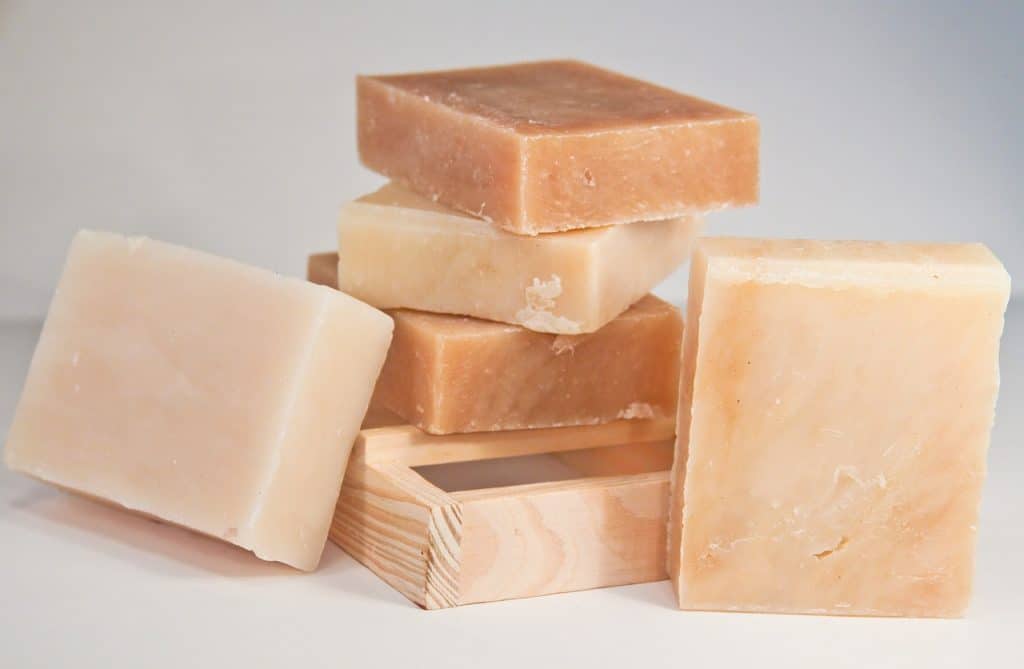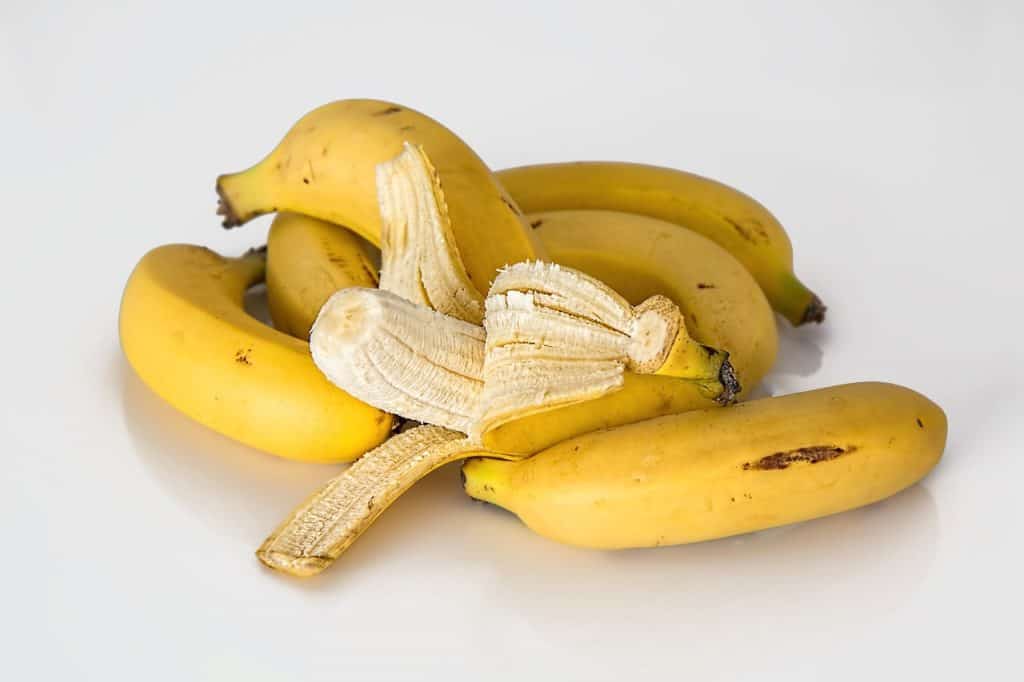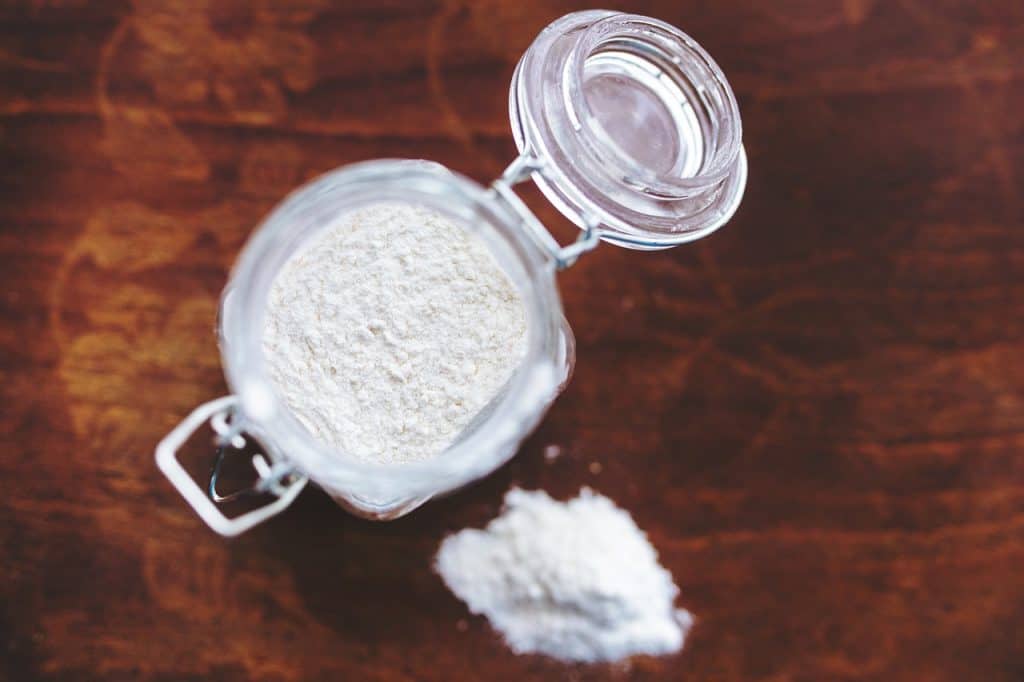Have you suddenly developed an itchy rash after spending a day trimming bushes in the garden? Then an uninvited plant might have appeared on your property.
I’m talking about poison ivy. You’ve heard about it, right? But you probably don’t know how it looks like or how to deal with poison ivy rash.
Well, it’s your lucky day. I’m going to explain to you everything you need to know about poison ivy and offer you some fascinating home remedies on how to get rid of poison ivy. Keep on reading.
What’s poison ivy?
Poison ivy is a plant, which you can meet as a perennial climbing vine or a shrubby bush. Its leaves come in sets of three, which is why you’ll hear people saying “Leaves of three, let them be.”
When the plant is young, its leaves are red, but in summer they turn green. In autumn the poison ivy undergoes another transformation, and its leaves are bright orange/ yellow or red.
The plant also blossoms and grows berries, so you have to be extra careful not to eat any of the fruit by mistake. To make it easy for you to recognize poison ivy, here are some pictures.
But why is poison ivy poisonous? Well, poison ivy causes an allergic reaction due to the presence of an oily substance on its leaves, stem, and roots. This oily resin is called urushiol, and it’s so sticky that it sticks to your skin, clothes, or shoes immediately.
You can get poison ivy rash in several ways:
- Touching any part of the plant (direct contact)
- Picking up a contaminated object – for example, your shoes
- Inhaling the smoke from a burning poison ivy
Keep in mind that the oily resin can stick to objects for a long time and cause an allergic reaction after a couple of years. So if you know that something has been in contact with poison ivy, clean it thoroughly to avoid future problems.
Symptoms of poison ivy rash
Usually, the symptoms of a poison ivy rash develop 12-48 hours after you come into contact with the plant and last up to three weeks. The severity of the symptoms depends on how allergic you are to urushiol and the degree of exposure to the plant.
The classical symptoms of a poison ivy rash are:
- Itchiness
- Redness
- Blisters
- Swelling
If you have inhaled the fumes of a burning ivy plant, you can also experience difficulty breathing.
The good news is that poison ivy rash is not contagious and you can’t pass it to someone else. But the bad news is that you can pass the poison ivy’s oil to another person. You can also spread the oil to other parts of your skin with your fingers. So be careful and remember to wash your hands thoroughly.
In severe cases, the rash might leave scars or lead to infection. Watch out for blisters filled with white fluid.
Home Remedies For Poison Ivy Rash

In most cases, poison ivy rash is not a medical emergency unless you are severely allergic to urushiol. The rash takes about 2-3 weeks to clear, and you can speed the process with some home remedies.
However, if you notice any of the following symptoms seek medical help immediately:
- Severe, widespread rash
- Difficulty breathing
- Fever
- Pus is oozing from the blisters
- The affected area is the eye, mouth or the genitals
- The rash is not getting better
Now, let’s see the most effective home remedies for dealing with poison ivy.
1. Rinse immediately to prevent poison ivy rash

Usually, you don’t know that you’ve encountered poison ivy until your legs and arms start tingling and itching. But if you’re a familiar plant and you know you’ve come into contact with its oil, there is something you can do to prevent poison ivy rash.
Necessary ingredients:
- warm water
- soap
Process:
- Get some hot, soapy water.
- Rinse your skin to get rid of the poison ivy’s oil.
- Wash anything that has been in contact with the plant.
Notes: Alternatively, you can use rubbing alcohol to remove the sticky oil from your skin. However, for this method to work you have to clean the affected area within an hour or so. There is no full guarantee that you won’t develop a rash, but it will be less severe.
2. Banana peels soothe the skin

Next time you eat a banana, think twice before throwing away the peel. No, you’re not going to use it to prank somebody. Banana peels can help you deal with the itchiness and discomfort caused by poison ivy rash because it soothes the skin and promotes healing. Here’s how to do it:
Necessary ingredients:
- a banana
- water
- soap
Process:
- Clean the affected area with soap and water.
- Peel the banana.
- Apply the banana peel on the affected stop.
- Keep it there for 15 minutes.
- Remove and repeat two-three times a day.
Notes: For some using banana peels as a treatment for poison ivy rash is just an old wives’ tale and they state that it doesn’t actually work. But others have tried it, and according to them, it’s very efficient. If you decide to give it a go, be careful. Stop the treatment if you notice that your rash is getting worse or you feel a burning sensation.
3. Oatmeal for treating inflamed and sensitive skin

Another simple home remedy for poison ivy rash is oatmeal. That’s not a real surprise. Oats are a common home remedy for many conditions due to their incredible health benefits. But why is oatmeal a proven remedy for poison ivy rash?
Well, oats are rich in antioxidants, including avenanthramides. They have anti-inflammatory and anti-itchiness properties, which makes them perfect for treating inflamed, sensitive or itchy skin.
In addition to this, preparing oatmeal will take you a couple of minutes, and you don’t have to go shopping for any expensive ingredients. Precisely what you’re looking for in a remedy for poison ivy rash, right?
Here’s how to use oatmeal to deal with the bothersome rash:
Necessary ingredients:
- a blender
- raw, unflavoured oats
- a bath with water
- essential oils (optional)
Process:
- Use a blender to grind one cup of oatmeal to fine powder.
- Add a tablespoon of the powder to a bowl of water to see if you have reached the right consistency. The water in the bowl should turn a milky color.
- Run a bath and add the powdered oatmeal to it.
- Optionally, you can add essential oils for extra nourishing
- Stir the water until the oatmeal and the other components have dissolved completely.
- Soak for 15-30 minutes.
- Rinse with clean, warm water.
- Pat yourself dry.
Another way to make an oatmeal bath is to place the oats into a muslin bag. Then put the bag into your bathwater. Read more about it here.
Notes: Be careful when you go into the tub because the surface will be more slippery than usual. And talk to your doctor if you are sensitive to gluten before you try this method. Usually, this is not an issue but better be safe.
4. Baking soda speeds the healing

Baking soda is one of the most common home remedies used for almost everything from dandruff to indigestion. So, you can’t make a mistake if you choose baking soda for getting rid of poison ivy rash.
Let’s see why baking soda works:
- It balances the pH of the skin
- Draws the toxin from the blisters
- Speeds the healing process
Necessary ingredients:
- baking soda
- water
- a bowl
- a tablespoon
Process:
- Measure three tablespoons of baking soda.
- Add them to the bowl.
- Pour water and mix.
- Stir the concoction until you have a paste.
- Apply to the affected area.
- Wait for the paste to dry.
- Repeat.
Another option is to take a bath with baking soda. Here’s how:
Necessary ingredients:
- a cup of baking soda
- a bath with water
- Epsom salts
Process:
- Start by filling your bathtub with water.
- Add a cup of baking soda.
- Add Epsom salts (optional)
- Stir the water to dissolve the soda.
- Get into the bath and soak for 20 minutes.
- Repeat.
Notes: You can also mix baking soda with oatmeal for fast recovery. However, don’t pop the blisters or you’ll slow the process.
5. Coffee has anti-inflammatory properties

That’s right. This tasty beverage is useful not only for waking up in the morning, but also for getting rid of poison ivy. How is that possible, you ask? Well, coffee beans contain something called chlorogenic acid. It has anti-inflammatory properties that can soothe the itchiness and speed the healing.
Necessary ingredients:
- coffee
- baking soda
- water
Process:
- Make a cup of coffee.
- Wait for it to cool down.
- Measure ½ cup of baking soda
- Add the baking soda to the cold coffee.
- Mix to make a thick paste.
- Apply the coffee/baking soda paste to the problematic area.
- Leave it to dry.
- Wash with water.
- Repeat twice a day.
Notes: It doesn’t matter what coffee brand you use.
6. Aloe vera relieves the pain
Prices pulled from the Amazon Product Advertising API on:
Product prices and availability are accurate as of the date/time indicated and are subject to change. Any price and availability information displayed on [relevant Amazon Site(s), as applicable] at the time of purchase will apply to the purchase of this product.
As you well know, aloe vera is a common remedy for many skin conditions. And it works for poison ivy rash too by soothing the irritation. In fact, aloe vera:
- Promotes tissue growth
- Speeds the healing
- Acts as a natural pain reliever
- Helps with scarring
Necessary ingredients:
- an aloe vera plant
- a knife
- a spoon
- a bottle
Process:
- Cut a leaf from an aloe vera plant.
- Use the knife to slice the leaf.
- Get a spoon and scoop out the gel.
- Apply the gel to the affected area.
- Store the rest in a bottle in the refrigerator.
Notes: You can also purchase aloe vera gel if you have an aloe vera plant. If you are not sure how to cut the leaves and extract the gel you can watch this video.
7. Apple cider vinegar removes the blisters

Apple cider vinegar is also an excellent choice for treating poison ivy rash because it dries blisters. It also:
- Prevents the rash from spreading
- Absorbs the poisonous oil from the skin
- Relieves the itching and discomfort
Necessary ingredients:
- apple cider vinegar
- baking soda
- water
- a bowl
Process:
- Measure three teaspoons of baking soda in a bowl.
- Add apple cider vinegar.
- Make a thick paste.
- Wash the affected skin and scrub the concoction on it.
- Rinse with water.
- Repeat.
Notes: You can feel a slight burning sensation when you apply the vinegar. That’s normal.
How to avoid poison ivy?
To be frank, it’s better never to come in contact with this toxic plant and deal with poison ivy rash. Here are some tips that will help you avoid poison ivy:
- Learn to identify poison ivy
- Keep pets away from possible poison ivy locations
- Wear protective clothing when working in the garden (long-sleeved shirts, rubber gloves, closed-toe shoes, hats)
- Clean your skin immediately after exposure to poison ivy
- Remove poison ivy from your garden but don’t burn it under no circumstances
- Wash any contaminated objects
If you know that you might encounter poison ivy, there is one more thing you can try to prevent poison ivy rash. Buy over-the-counter creams, known as barrier creams, to block the effect of the urushiol.
These creams have to be applied to your skin an hour before your expected exposure. They act by delaying the absorption of urushiol. But you have to wash the cream off in four hours if you get in contact with the plant.
There is one more thing worth mentioning. You might have heard that eating a poison ivy leaf will make you immune to its poison. That’s nothing but a myth, which could endanger your health.
If you eat some of the leaves, the toxic oil will get in your throat. It can cause blisters inside the mouth, throat swelling, and difficulty breathing. It all depends on how sensitive you are to urushiol.
Poison ivy is not something that you want to have in your garden or encounter in nature. But, it’s widespread everywhere in the USA, except Alaska. That’s why it’s important to learn how it looks like and to keep yourself as far away from it as possible.
So what do you think about these home remedies and tips on how to get rid of poison ivy? Have you ever tried them? Share your experience with this plant in the comments.




